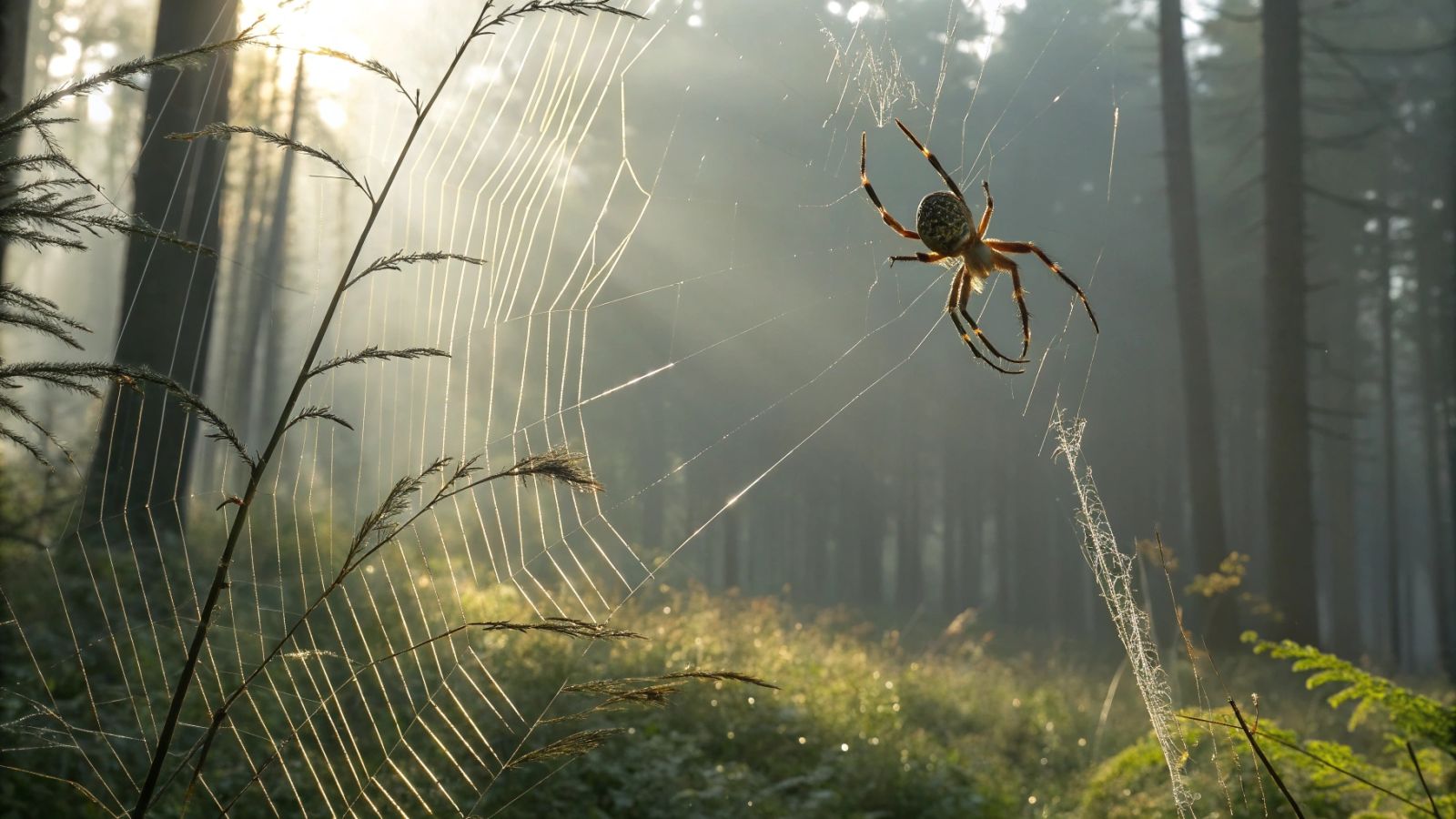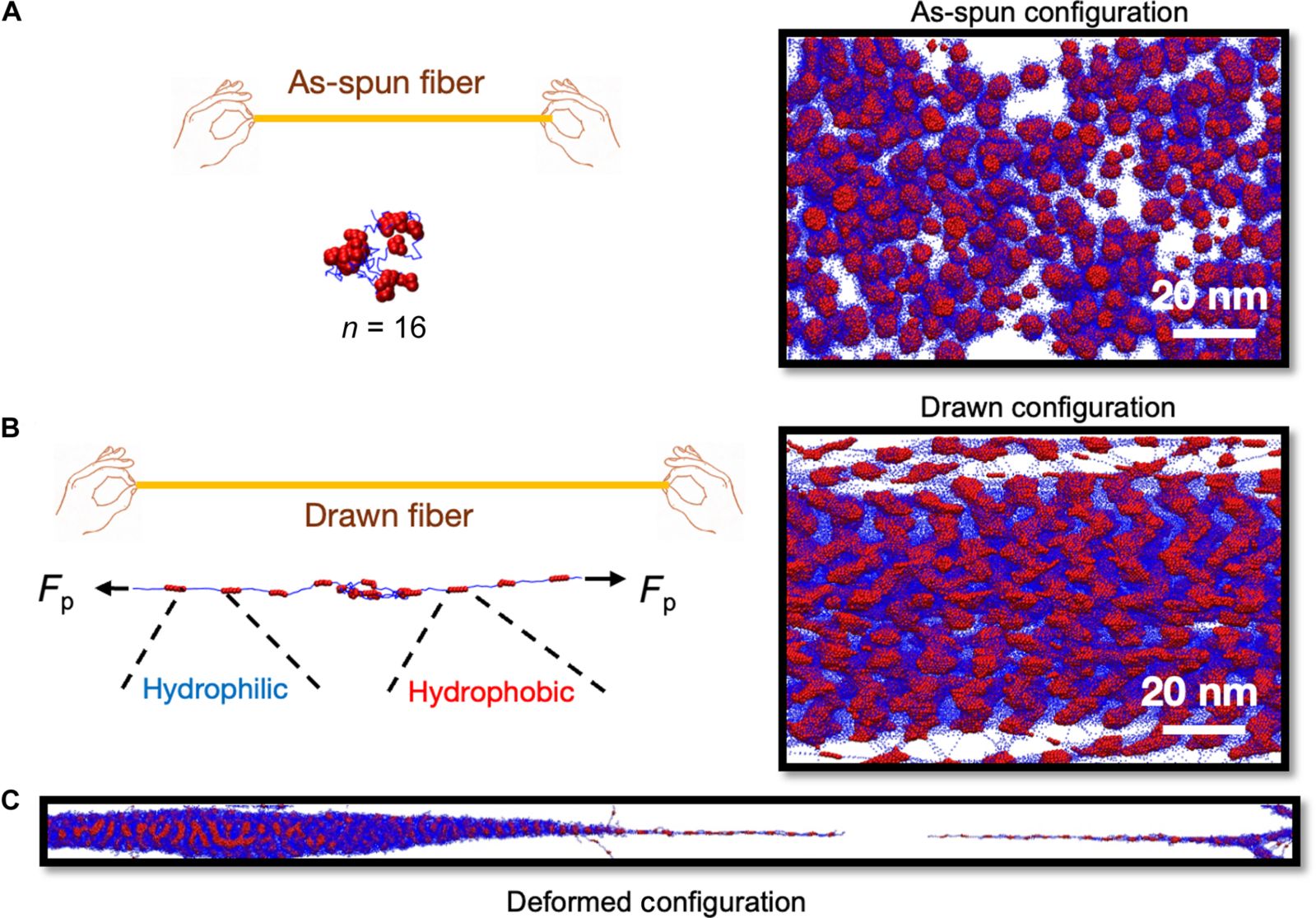Why does stretching spider silk make it stronger? 🕷️
Published by Cédric,
Article author: Cédric DEPOND
Source: Science Advances
Other Languages: FR, DE, ES, PT
Article author: Cédric DEPOND
Source: Science Advances
Other Languages: FR, DE, ES, PT
Follow us on Google News (click on ☆)

This study, conducted by a team from Northwestern University, combines computer modeling and laboratory experiments to understand how stretching transforms the molecular structure of silk. The results could lead to innovations in the design of bio-inspired materials, ranging from medical sutures to bulletproof vests.
The role of stretching
When a spider weaves its web, it stretches the silk with its hind legs. This gesture, far from being insignificant, aligns the protein chains and increases the number of hydrogen bonds between them. These modifications make the silk stronger and more elastic, an essential property for capturing prey or withstanding weather conditions.
Using numerical simulations, the researchers observed this phenomenon at the nanoscale. They found that stretching transforms disordered protein clusters into an interconnected network, thereby reinforcing the fiber. Before stretching, the proteins form compact globular structures, but the pulling process aligns and organizes them into overlapping layers, creating a molecular architecture optimized for strength.

a) Snapshots of a simulated silk protein at 16 repetitions in the unstretched state and DPD simulations of spun silk systems.
b) Snapshots of a silk protein at 16 repetitions in the stretched state under the effect of a pulling force (Fp) applied to the ends, with DPD simulations of stretched silk systems.
c) High-frequency deformation to stretch fibers until rupture and measure their relative mechanical properties.
Laboratory experiments confirmed these predictions. By stretching artificial silk fibers, the team reproduced the mechanical properties of natural silk, validating the importance of this process. The tests showed that a fiber stretched up to six times its initial length becomes significantly stronger, demonstrating that stretching is a key lever for adjusting the properties of bio-inspired materials.
Promising applications
Spider silk, stronger than steel and more resistant than Kevlar, has long interested scientists. However, large-scale farming is difficult, pushing researchers to develop synthetic alternatives. These materials could replace petroleum-derived plastics, offering a solution that is both high-performing and eco-friendly.
The team's work could enable the design of materials with adjustable properties. For example, by modulating the stretching, it would be possible to produce fibers tailored for specific uses, such as biodegradable sutures or ultra-resistant textiles. These innovations could impact sectors such as medicine, where silk could be used for sutures or adhesive gels, or even industry, with lightweight and resistant materials for protective equipment.
These advances could also reduce our dependence on petroleum-derived plastics, offering an eco-friendly and high-performing alternative. By reproducing the natural mechanisms of spider silk, researchers hope to create synthetic materials with similar performances, opening the way to innovative applications in various fields, from fashion to aerospace.
To go further: How do spiders produce their silk?
Spiders manufacture their silk in specialized glands, where soluble proteins are transformed into solid fibers. This process, called spinning, is triggered when the silk is stretched as it exits the spinnerets. These glands produce different types of silk, each adapted to specific uses, such as web construction, prey capture, or egg protection.
The silk starts as a liquid, but as it passes through the spinnerets, it solidifies. The stretching applied by the spider aligns the proteins, which strengthens the final structure. This transformation is essential for creating fibers that are both strong and elastic, capable of withstanding mechanical stress. Spiders adjust the tension and speed of stretching to produce threads with varied properties, suited to their needs.
This natural process, optimized by millions of years of evolution, inspires scientists to develop synthetic production methods. By understanding how spiders control the formation of their fibers, researchers hope to reproduce these mechanisms in the laboratory, paving the way for innovative and high-performing materials.